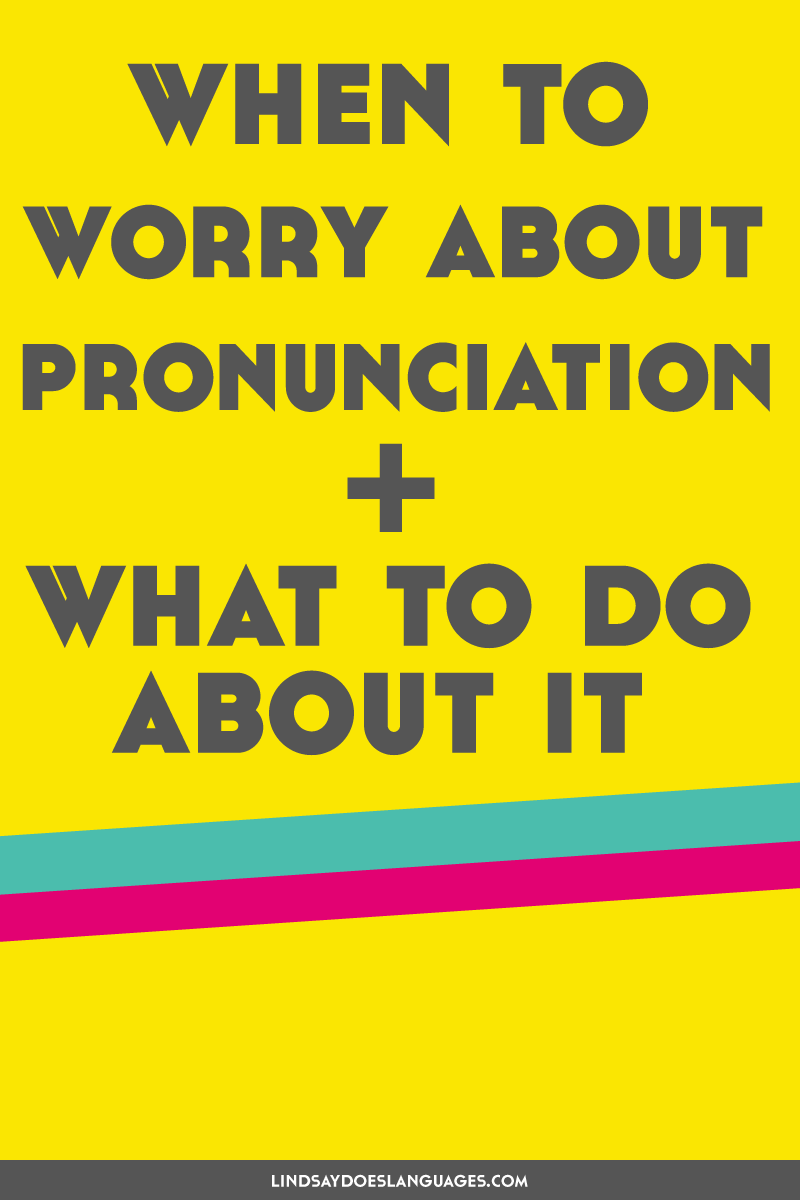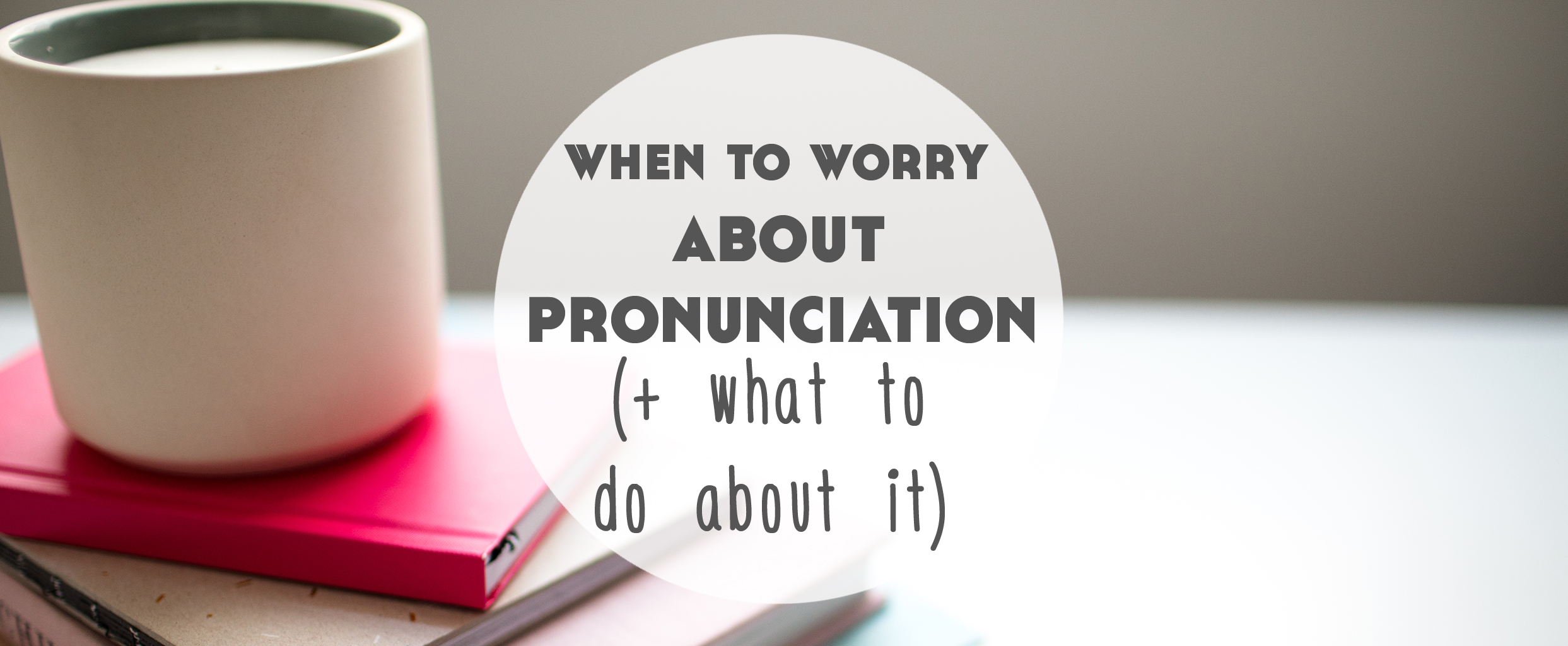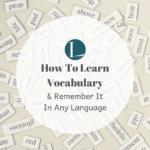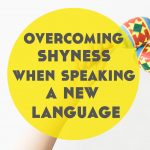October 9th, 2018
When to Worry About Pronunciation When Learning a Language (+ What To Do About It)
Do you worry about pronunciation when learning a language? You don’t need a perfect accent when you speak a foreign language. Your language skill and communication is not lessened by your accent. Yes, it’s true that your accent may influence people’s judgement of you, but people by our very nature always judge – your accent is only accountable for a part of that judgement, so why worry?
But of course, your accent and pronunciation is definitely an area you can improve when learning a new language. So when should you worry about your accent and pronunciation when learning a language? And what can you do to improve it?

First of all, let’s set something straight. There are two key things that often get blurred into one another: accent and pronunciation.
Your accent includes things such as different segmental sounds depending on where you’re from. Accent is pronunciation linked to a specific area or people. What probably leads to the confusion between the two words is that accent is often interchangeable with the word pronunciation.
Meanwhile, your pronunciation can be divided into 2 areas: segmental pronunciation and supersegmental.
Segmental covers “phonemes”, or sounds, specifically. Be sure not to confuse this with syllables. For example, the word “good” is 1 syllable but consists of 3 sounds – “g-oo-d”.
Supersegmental on the other hand covers everything not related to individual sounds, but instead relating to multiple segments. For example, intonation is a big part of this – which words do you emphasise in a sentence?
The individual sounds and the speech techniques you use to express those sounds can affect how easily you’re understood when speaking a different language, possibly leading to misunderstanding.
This means that pronunciation is something that you can (and should) consider from early on learning a language.
Accent on the other hand, is something that you don’t need to worry too much about, at least not in the early stages. It’s very much a personal choice.
What to do to improve your pronunciation
Think about it from the start
I remember when I first started learning Korean. I’d started Japanese with daily 30 minute lessons on italki, and I tried a similar technique with Korean so I’d be able to speak a few basics before needing to understand Hangeul (the Korean writing system). It didn’t work.
My tutor spent 8 whole hours (not in one go, phew) teaching the pronunciation for Korean. This wasn’t what I wanted, or in my case needed.
I’m the kind of language learner that skips past the first few pages of a coursebook that starts with pronunciation. Shh, don’t tell.
The thing is, at this stage, those individual sounds (the segments, if we think back to what we just learnt about pronunciation) don’t yet mean anything to us. We have no connection, and nothing to relate these sounds to.
Although, it is helpful to think about pronunciation from the start. So how do we do it without going crazy with those sounds at the start of your new language book?!
A much better approach is to incorporate your pronunciation into your language learning. Try the tips below and make it part of your language learning alongside other elements of study rather than before.
You want to think about it from the start but not obsess over it, and definitely don’t avoid moving on until you know every single sound perfectly. For some that might work, but I honestly believe most of us would be so bored stiff by that that we’d give up – like I very nearly did with Korean.
Get an awareness of your mouth – where is your tongue, teeth, lips when you say each word?
When you need to slow down and break things down to those individual sounds, think about what your mouth is doing, but not just your mouth. Where are your teeth, lips, tongue as you make that sound? How does this compare to where they should be?
Not sure where they should be? Use YouTube and Google Image searches to find visual examples of what your mouth should be doing as you pronounce each sound.
This is especially helpful for tricky sounds that are new to you and not found in your native language or previous languages you’ve studied. For example, a rolled R in Spanish or a ‘creaky tone’ in Burmese.
Learn the IPA
I’m not talking about beer! The IPA is the International Phonetic Alphabet, a phonetic alphabet system created by linguists that contains all the sounds of all the languages in the world…yes, all the languages. I know, exciting stuff.
You definitely don’t need to learn the whole IPA (although if you’re into it, why not?) but becoming familiar with the IPA, especially the symbols for sounds used in the language you’re learning, will help you not only to understand the pronunciation of each sound, but also to read those squiggly letters next to works in the dictionary! Woohoo!
There’s a couple of charts with sounds online (try this one and this one) but it’s also worth checking for the IPA used in the language you’re learning. Wikipedia has great lists for this. Click here for the English list and scroll down to show the ‘International Phonetic Alphabet keys’ to see them all.
Shadowing
The first couple of tips above will be helpful for you to improve your segmental pronunciation (the sounds), but what about the supersegmental (everything you use to express those sounds – intonation etc)?
Shadowing is the perfect answer to this.
Shadowing involves listening and repeating what you hear as soon as you hear it.
There are various ways to do this.
Number 1 – listening only. If you work quite well just with listening to stuff, then you can try shadowing by listening to something and repeating.
Number 2 – listening and reading along. Perhaps (much like me!) you prefer to read what you’re listening to at the same time, in which case, this method will work best.
Find audio with matching text. Great places to start are your coursebooks. If you have a dialogue and accompanying audio then you’re in luck! (subtitles don’t work well for this, as they’re often different from the audio).
Glossika works great for shadowing too.
You don’t have to repeat every word perfectly, especially at the beginning. Besides – that’ll be way too tricky when you’re in the early stages of the language and trying to get used to this new activity.
When you lose track of the words themselves, try and keep a flow with the sound you hear until you can pick things up again.
Get a “sound” of the language in your head
Many people say that passive listening is a waste of time when you want to learn a language, and for the most part, they’re right. But not completely. Don’t quit your passive listening just yet.
For one thing, if it’s passive, it’s taking very little effort on your part so why worry about stopping something that’s effortless, especially if it’s something you do when you can’t be doing something else more proactive for your language learning. (I’m thinking when you’re driving, running, hoovering etc)
But secondly, it does actually have its use. Passive listening, especially in the early stages when you don’t actually understand much is a great way to get a “sound” of the language in your head. Each language has a certain flow, a rhythm..a sound.
Of course, this will depend on who’s speaking and who they’re speaking to and how they feel about what they’re speaking about…there’s plenty of factors, but you’ll find that the more passive listening you do, the more you’ll get a sound of the language in your head. This helps with the supersegmental side of your pronunciation.
Use YouTube videos for the tricky bits
The quality will vary because it’s the self-made side of the internet we’re talking about here, but YouTube is a huge resource to help you nail those tricky bits of pronunciation. I’m thinking rolling the Spanish R, mastering the English THs, or those throaty Arabic letters you’re not used to.
Once you’ve found a good YouTube video to help you out, gather together some words that have that sound in and begin to combine the sound with others.
Then, yep, you’ve probably guessed, put those words into full sentences. Context all the way!







